“I find the dramatic power of ‘bad’ weather captivating”: Christophe …
There's no such thing as bad weather, so the saying goes - only the wrong clothing. While most of us would be happy to put up with some discomfort en route to capturing a scintillating scenic view, going outdoors specifically to take photos of appalling weather conditions is surely not a major motivation. However, this was the raison d'etre of the French photographer Christophe Jacrot[1] for his latest book, Lost in the Beauty of Bad Weather.
So what motivates Christophe to document "the rain, the snow, the wind [and] the cinematic emotions they conceal", as he expresses it in the book's introduction? We speak to him to find out.
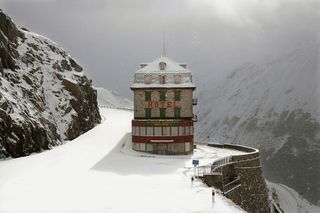
What first attracted you to photography, and what has been your photographic journey since that point?
I've always been fascinated by images, and the quest to find emotions in them. I started taking photos when I was about 15 but abandoned it at 18.
Which photographers inspired you when you were starting out?
Saul Leiter[2], but I was guided by my instinct.
There are subtle influences, such as Japanese woodblock prints, which often depict bad weather. I recently discovered Todd Hido[3], but I'm careful not to copy him.
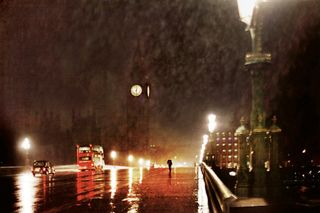
How did you get your initial break into becoming a professional photographer?
I got back into photography after a period of filmmaking. Not being a writer myself, I didn't feel I could live up to my ambitions.
Photography was my passion at age 15, but I was 45 when I caught the bug again. I took a four-month photojournalism course and got a commission for a tourist guide, which involved taking pictures of 200 locations in Paris. The brief was that they all had to have a 'sunny atmosphere'.
But that springtime, it never stopped raining! That's where I got this urge to take photos in the rain and other types of awful weather. And I've never stopped since.
To capture photos like this - being out in all weathers and trying to make the most of the difficult conditions - you must be quite obsessive?
Of course!
But then, aren't all artists a little obsessive?
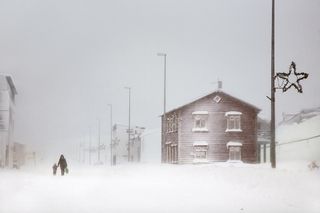
Do you actually enjoy working in such awful conditions? Under similar circumstances, most people would be happier to stay indoors...
But that's life, too! No bad weather means no life!
I find the dramatic power of 'bad' weather captivating. It has a beauty that's austere but real.
Which camera setup do you use and why did you choose it?
I always start with a pretty quick shutter speed, as quick as possible, and ISOs depending on the light. I never go above 3200.
Everything else flows from there. It's often a trade-off, especially in low light. Controlling the shutter speed is my main priority.
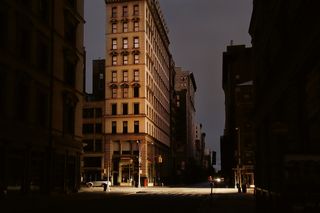
How much additional equipment do you carry with you when you're working in such wild weather - rain covers, lens cloths, spare batteries... and food and drink to keep you going out in the field?
I have a lumbar compression fracture, so I have to keep things as light as possible.
A camera, a good zoom lens and that's it. I don't want to have to swap lenses in a storm. Either my car or home is never far away, so I don't need to worry about going hungry, but I often take a snack of dry goat's cheese.
I can stay outside for hours. The camera is protected by a bag, and I wear standard gear and a thin glove on my right hand, which is partly protected by the bag. The wind is my biggest enemy - I use disposable tissues to wipe the lens.
It's not what the professionals do, but if I took a special cloth, I'd only be able to use it once. You also have to deal with the risk of condensation and sudden temperature changes that cause the lens to fog up.
What are the most extreme lengths you've had to go to when capturing the beauty of bad weather?
I never stray far from the car or my home, but I can stay out for hours. There's always a human element in my photos, so I never venture deep into the wilderness.
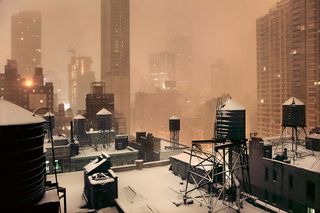
How did you pick your shooting locations - do you just go where you know the weather will be bad?
Just my inspiration.
Although I do have a smartphone app that shows rain forecasts. If there's a deluge expected somewhere, I look to see if the location is interesting. I do a lot of scouting online, although the 48-hour forecasts are never particularly accurate.
Unfortunately, you can't just hop over to Japan at the last minute, you have to go for a while. I do have a list of places that I'm interested in. For example, I went to Iceland based on forecasts saying the weather would be rough for a few days in one region.
You have to provide a context for each image - a snowstorm surrounding a structure has resonance, for example - so in terms of composing your photos, what are the most important factors you are looking for?
That's a tough question.
The most important thing is finding somewhere that inspires me! Once I've done that, I concentrate on it. And again, instinct...
Are you pleased with the images taken from the car in Scotland and France?
They look like paintings.
That's one distinctive aspect of my work, the window effect, but it's hard to get satisfactory results. First, I have to be able to position my car, and then the subject has to play ball. It often doesn't come out right.
I've tried practising with a portable window, but the results weren't convincing, and it creates other problems, too. The 'subjective' aspect of the car is also important.
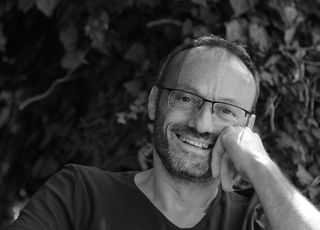
Do you think you have a recognizable photographic style, something that binds?all the photos in the book together?
That's a good question. People often tell me they can recognize my style.
I'll take that as a compliment as, for me, style is essential. But to be honest, I don't know if I really have a 'style' as such.
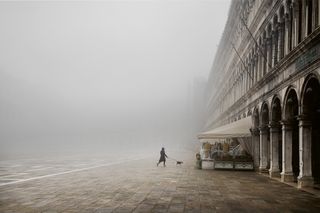
Over how many years were these photos taken? And, when you started shooting them, did you know you wanted to produce a book straight away?
The Lost in the Beauty of Bad Weather book was commissioned by the German publisher teNeues.
I gave my production artist 400 photos and he did the rest. So, this book is a collection of 13 years of photos. I've done five other books before this one, but they were all on more specific themes.
Are you trying to make a wider point with the book - that climate change means that 'bad weather' is just becoming 'weather', perhaps?
Climate change or no climate change, there will always be bad weather.
It's just a matter of how dangerous it becomes and how violent some spells of it are.
As for a wider point, I have lots of questions in my mind, but no real answers.
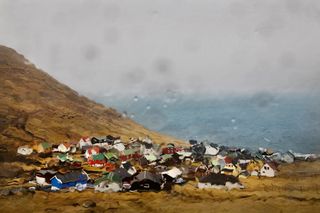
What's coming up next for you?
Spending a month this winter in Japan or the USA, two countries where they have real winters.
And returning to the Faroe Islands, which is my favorite place in the world... and perhaps another book.
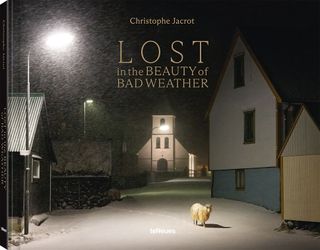
Lost in the Beauty of Bad Weather by Christophe Jacrot is published by teNeues and is priced at GBP55/£85.
References
- ^ Christophe Jacrot (www.christophejacrot.com)
- ^ Saul Leiter (www.saulleiterfoundation.org)
- ^ Todd Hido (www.toddhido.com)